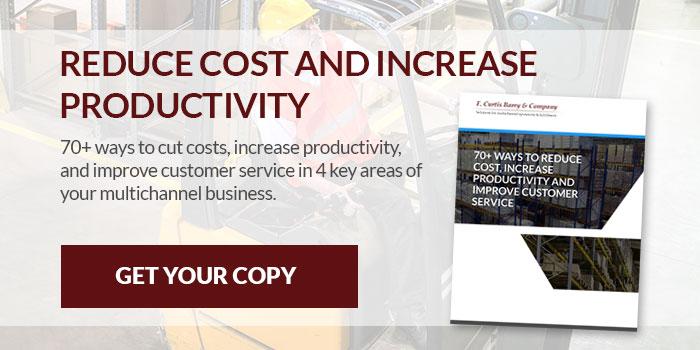Many small to moderate sized e-commerce businesses do not employ sufficient long range planning as part of their business culture. The old joke about the definition of long range planning is operative in some companies: “Where are we going to eat lunch?” Large businesses have comprehensive processes necessitated by the owners and investors and the need to communicate objectives and results to various stakeholders.
While long range planning can be time consuming in larger companies, smaller businesses can benefit from adopting some of the key best practices. The advantages to implementing longer range planning in smaller e-commerce businesses are:
- Provide a top down and bottom up planning process that is a guide to how the business can achieve the owner’s objectives with expense control and profitability. The owner may have an idea of where he wants to be at year-end, and the planning process yields a plan for achieving it;
- Planning cash requirements for inventory purchases, payroll and expansion of the business which are in line with projected sales and resulting gross margin;
- Broaden the analysis of results to merchandising, marketing, fulfillment and accounting in addition to e-commerce statistics which many businesses measure well;
- A quarterly review of goals, financial plans and discussion about adjustment if necessary.
Start planning on a longer term horizon.
What length of time is realistic? Most small and medium businesses have a sales goal for the year but may not have a detailed plan of how to achieve it. By a plan, we mean monthly goals for sales, maintained gross margin; major expense categories (e.g. advertising, payroll, fulfillment, shipping costs), major new acquisitions (e.g. systems and expanded facilities) and profitability. Additionally, where in the year is cash needed and will there need to be temporary borrowing to buy inventory?
From our experience, planning longer than two or three years out is difficult. E-commerce businesses grow and change so fast that it does not merit the time and labor spent to project plans at a detailed level further out than two or three years. We use the word “longer” with the idea it’s a longer time horizon than many smaller businesses currently plan for. Extend your planning for the current fiscal year forward and a second year as a series of goals that are realistic if you reach the current year’s goals. The second year will be necessary to be able to plan purchases that have long lead times such as proprietary and exclusive product. Update the plans quarterly with your best available data and intuition.
Adopt a formal budgeting process.
To support the profit projection, institute a budgeting process for at least at the major expense categories and report monthly on actual sales, expenses and profit. To make accounting data more timely, many small businesses need to reduce the time required to close the fiscal period. Large companies close within 2 weeks of the close of the fiscal sales month. Part of closing periods early is having the data to review and to institute more discipline in using the data to plan and manage the business.
Start with a post holiday season analysis.
Our recent blog, 10 Ways to Analyze Your Peak Season Fulfillment (Dec. 10, 2018), discussed ways of evaluating your fulfillment post holiday season. The same type of evaluation and planning needs to be adopted for all major areas and should become part of the planning process. For example, in many e-commerce merchandise assortments, Pareto’s Law (80/20 rule) holds true: 20% of the products offered give 80% of sales and maybe a higher percent of profit. When you look at item profitability, do you allocate advertising expenses, fulfillment and general & administrative expenses to determine net profitability by product? How will you grow the item assortment seasonally and by year? These types of analyses should become part of your quarterly process.
Involve key employees throughout the process.
In larger companies, the planning process most likely is driven by the CEO or CFO with detailed planning by the merchants, marketing and fulfillment managers. In turn, they enlist key employees to help develop plans for their respective responsibilities. The planning process needs to start with ownership and senior managers setting what the sales goals are first (top down plan). Then a bottom up detailed plan can be developed by key people involved in each area to meet the top down goals.
Communicate the results of the sales and profitability monthly to the senior people involved in the process. This may take a culture change on the part of ownership. This doesn’t mean that people involved with the process have detail access to sensitive financial information such as payroll. But help the key employees understand how you make money and what the major expenses are.
Most employees are clueless about how companies make money; how expensive benefits are; what investment is required to adopt new systems or expand fulfillment. We have found that when key people are given that knowledge and feedback of results, they help us grow the business profitably.
As your planning becomes more effective, implement a quarterly communication meeting with all employees to communicate the highlights sales, profitability, customer service and new initiatives. We believe most employees want to help the company reach its goals and not just pick up a paycheck.
Adopting a longer term planning process has many advantages. It does take time and will lead to more detailed planning in all major areas of your business. Start this year with the analysis and planning that leads to improved sales, profitability and improved customer service.





SHARE